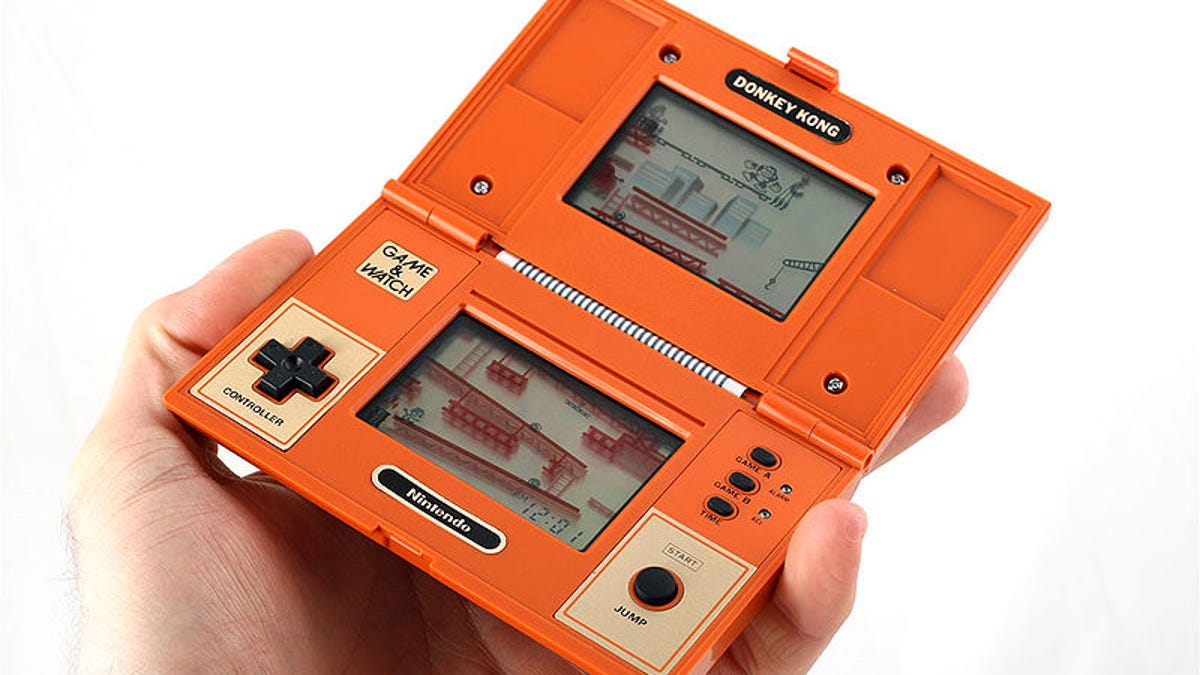Nintendo flashback: Game & Watch
Nintendo's new series of Game & Watch rereleases on DSiWare took this author back in time to the days before Game Boy...1983.

The year: 1983. I was headed to sleepaway camp at Camp Na-Sho-Pa in upstate New York. "Return of the Jedi" and "Krull" were the big movies that summer. As I got my books and toys packed for weeks in the humid isolation of cabins in the middle of the woods near Bloomingburg, I made sure to take the one portable game system I had at my disposal. Or, rather, two. I packed my Game & Watch collection delicately--they used to cost a whole $20 each--and made sure the watch batteries they took were fresh.
Before the PSP, the Nintendo DS, the TurboExpress, Game Gear, Atari Lynx, or even the Game Boy, there was Game & Watch, Nintendo's first handheld game franchise. The portable LCD games were compact, took watch batteries, told the time--hence "Game & Watch"--and only played one game per unit. This was an age when an LCD game was made by cutting out a series of silhouettes across an LCD screen, which would ping on and off to create animation of a crude sort. Nintendo wasn't the only company to make these types of handheld games, but it was the one that made the very best.
It's fascinating how closely the Nintendo DS design matches the look of those old Game & Watch dual-screen models. It's no accident: the classic Nintendo crosspad was born on these units, and the DS is really the latest step in the Game & Watch evolution.
Pinball was a cherished classic of mine. Dual screens created a long pinball table, and though the ball leaped from spot to spot with bleeps and blips, the overall feel was convincing and better than anything else that existed. Other arcade games, like Donkey Kong Jr., actually created levels out of little moving LCD-block platforms that Donkey Kong could hop over. Some parts of the screen, such as vines to climb on, were actually painted on parts of the background, adding bits of color to what was otherwise a black-and-silver affair.
I remember sinking untold hours into these simple games, which couldn't even be saved or paused. Each game also came with an "A" or "B" mode, which ratcheted up difficulty and tended to throw an additional challenge in the mix.
Nintendo revisited Game & Watch with several collections on the Game Boy, Game Boy Color and Game Boy Advance, as well as two collectors' edition DS games available to members of Club Nintendo. In Super Smash Bros. Brawl, one of the hardest characters to unlock is "Mr. Game & Watch," an LCD stick-man who jerkily moves through an arena that's a montage of the old LCD games. On the iPhone, a few well-made Game & Watch rip-offs were released and promptly removed.
Nintendo has wisely released a handful of these games onto the DSiWare Shop for 200 points ($2) each, a fair price for little games that have a surprising amount of replay value depending on your patience. These games all came from the era when most arcade games couldn't be "completed"--they just got faster. The structure of nearly every Game & Watch game is a series of shorter or longer survival tasks, which are then repeated at an ever-faster clip until you lose your requisite three lives. Achieving a high score is the main goal, and the accelerating mini-game feel of these titles is undeniably the underpinning behind the later release of
The herky-jerky animations are faithfully recreated. You can even make out the faint shapes of the preset animations cut into the LCD screen, much like you could on those old LCD games.
Sadly, all the DSiWare games are recreations of single-screen Game & Watch titles. Dual-screen games would be perfect, but they're not here yet.
Those not born in the '70s might find these games arcane and awkward, but they're a real museum of Nintendo's handheld past. I don't know where mine are--not even a recent flooded basement could unearth them from the bowels of my parents' museum collection of stacked cardboard boxes. I'm glad to have some of the memories back, though. I wish they'd treat the rest of their Game Boy archive with equal reverence (hint-hint, Nintendo).

